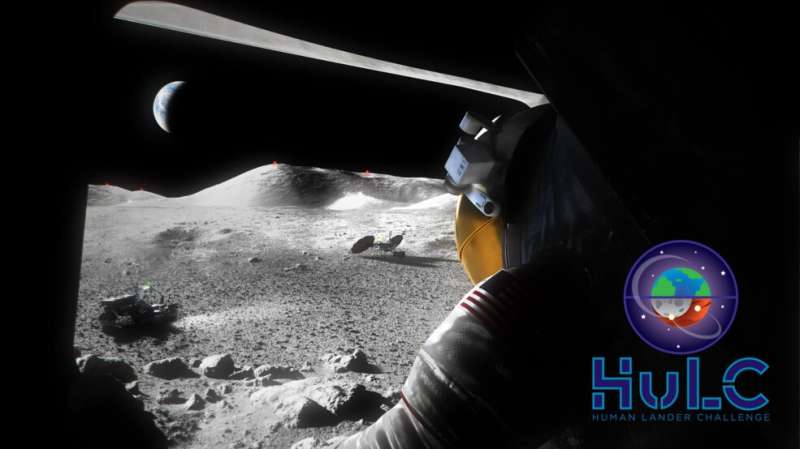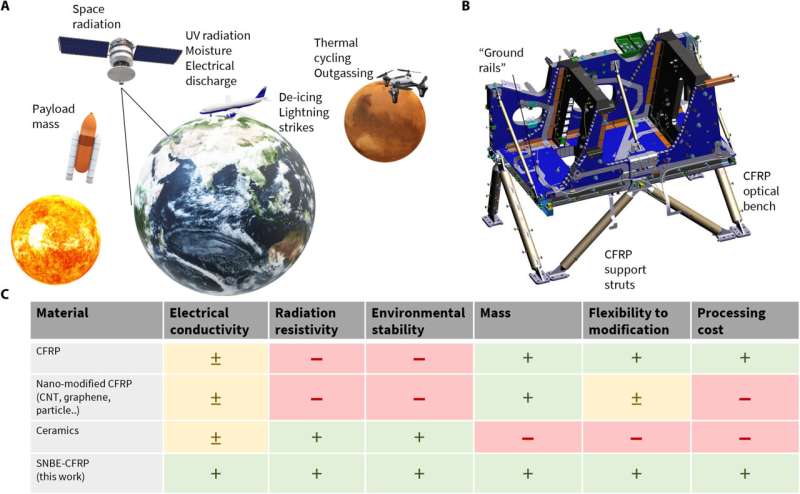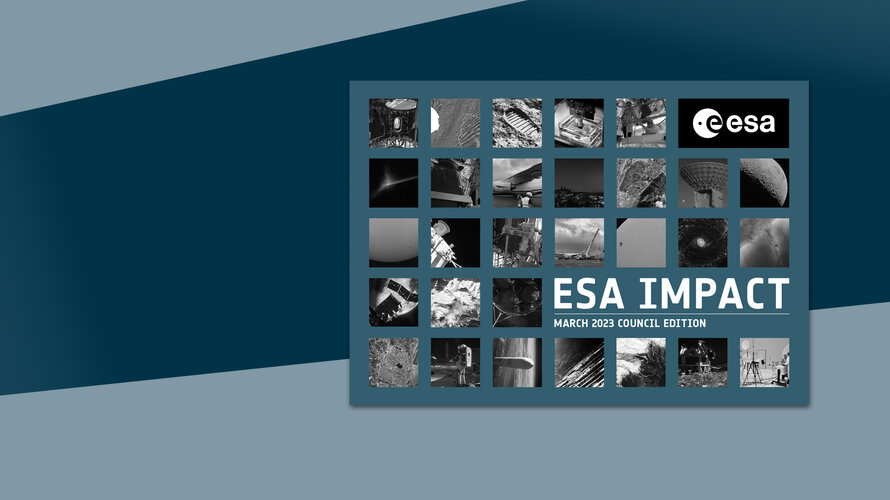Terran Orbital further expands satellite production facilities
Wednesday, 22 March 2023 02:43
Satellite manufacturer Terran Orbital is planning another expansion of its factory in Southern California to accommodate an anticipated increase in government and commercial orders.
Frontier collects $10 million from AEI HorizonX
Tuesday, 21 March 2023 22:16
Frontier Aerospace raised $10 million in Series A funding from AEI HorizonX.
The post Frontier collects $10 million from AEI HorizonX appeared first on SpaceNews.
NASA seeks student ideas for moon landing dust control
Tuesday, 21 March 2023 20:01
As NASA and industry partners develop new human landing systems to transport astronauts from lunar orbit to the moon's surface and back as part of Artemis, the agency is asking university students to investigate solutions to one particularly dusty aspect of landing spacecraft on the lunar surface.
NASA's new Human Lander Challenge invites college students to explore ways to manage or prevent the cloud of dust a spacecraft stirs up when using rocket engines to land on unprepared surfaces like the moon. This effect is called plume surface interaction and can increase risks caused by lunar dust on future human missions.
"The moon is covered with granular, rocky material called regolith, which can be lifted from the surface by rocket engines during landing and ascent.
U.S. Air Force to test hardware at hypersonic speeds on Varda’s space capsules
Tuesday, 21 March 2023 18:31
The U.S. Air Force plans to use startup Varda Space Industries’ reentry capsules as hypersonic flight test platforms
Ultra-lightweight multifunctional space skin created to withstand the extreme conditions in space
Tuesday, 21 March 2023 17:25
A new nanobarrier coating could help protect ultra-lightweight carbon composite materials from extreme conditions in space, according to a study from the University of Surrey and Airbus Defence and Space.
Amateur astronomers needed: help classify stars with Gaia's data
Tuesday, 21 March 2023 14:00
ESA's Gaia mission has been collecting data on millions of space objects like stars and asteroids to build an extensive cosmic record. Now, to take it up a notch, it needs your eyes.
South Korea’s Innospace succeeds in test launch
Tuesday, 21 March 2023 12:50
South Korean rocket startup Innospace successfully launched a suborbital rocket from Brazil over the weekend, demonstrating a hybrid motor it plans to scale up into a small orbital launch vehicle.
Japanese lander enters lunar orbit
Tuesday, 21 March 2023 11:48
A lunar lander developed by Japanese company ispace has entered orbit around the moon, setting up a lunar landing attempt by the end of April.
On National Security | Space Force and commercial industry taking relationship to the next level
Tuesday, 21 March 2023 11:00
The U.S. Space Force is exploring the creation of a space equivalent of the civil reserve air fleet, or CRAF, a program the Pentagon conceived 70 years ago to gain access to commercial airlift capacity in an emergency.
ESA Impact – March 2023 Council edition
Tuesday, 21 March 2023 09:30
ESA Impact – March 2023 Council edition
Welcome to the March Council edition of ESA Impact, an interactive showcase of the best images and videos since the last Council meeting
Journey through Jezero
Tuesday, 21 March 2023 09:00 Video:
00:03:03
Video:
00:03:03
Explore the fascinating landing site of NASA’s Perseverance rover in this fly-through video, featuring new views of Jezero crater and its surroundings from ESA’s Mars Express and NASA's Mars Reconnaissance Orbiter.
The video begins by panning around Jezero crater, which can be seen in the centre background surrounded by textured and cratered terrain. The crater moves into the foreground roughly halfway through, when an outflow channel can be seen snaking away from the crater wall and towards the camera perspective. Two inflow channels (Neretva Vallis and Sava Vallis, found on the western-northwestern rim of Jezero) then become visible;
Fossil site is 'Rosetta Stone' for understanding early life
Tuesday, 21 March 2023 08:59 Leading edge technology has uncovered secrets about a world-renowned fossil hoard that could offer vital clues about early life on earth.
Researchers who analysed the 400 million-year-old-cache, found in rural north-east Scotland, say their findings reveal better preservation of the fossils at a molecular level than was previously anticipated.
Fresh scrutiny of the exquisitely preser
Leading edge technology has uncovered secrets about a world-renowned fossil hoard that could offer vital clues about early life on earth.
Researchers who analysed the 400 million-year-old-cache, found in rural north-east Scotland, say their findings reveal better preservation of the fossils at a molecular level than was previously anticipated.
Fresh scrutiny of the exquisitely preser Silvus Technologies unveils Spectrum Dominance
Tuesday, 21 March 2023 08:59 Silvus Technologies has launched Spectrum Dominance, an expansive suite of Low Probability of Intercept/Low Probability of Detection (LPI/LPD) and Anti-Jamming (AJ) capabilities that provide secure and Electronic Warfare (EW) resilient mesh network communications at the tactical edge. Developed in concert with the U.S. Army's C5ISR Center, Silvus' Spectrum Dominance enables StreamCaster MANET ra
Silvus Technologies has launched Spectrum Dominance, an expansive suite of Low Probability of Intercept/Low Probability of Detection (LPI/LPD) and Anti-Jamming (AJ) capabilities that provide secure and Electronic Warfare (EW) resilient mesh network communications at the tactical edge. Developed in concert with the U.S. Army's C5ISR Center, Silvus' Spectrum Dominance enables StreamCaster MANET ra US Space Force Orbital Prime awards Contract to Orbital Assembly
Tuesday, 21 March 2023 08:59 Orbital Assembly has been awarded a $1.7 million contract from the United States Space Force to develop rapidly deployable On Orbit structural technologies to support many types of electronic equipment. The United States Space Force is a separate and distinct branch of the armed services, organized under the Department of the Air Force.
In the Direct to Phase II Small Business Innovation R
Orbital Assembly has been awarded a $1.7 million contract from the United States Space Force to develop rapidly deployable On Orbit structural technologies to support many types of electronic equipment. The United States Space Force is a separate and distinct branch of the armed services, organized under the Department of the Air Force.
In the Direct to Phase II Small Business Innovation R Coherent Logix launches 'HyperX: Midnight', world's most advanced space processor
Tuesday, 21 March 2023 08:59 Coherent Logix, a world leader in high-performance, low power Systems-on-Chips (SoCs) and advanced development tools, has announced the launch of HyperX: Midnight, the company's fourth generation HyperX SoC for the Space 2.0 market.
Coherent Logix has been serving the Space 2.0 and Defense markets for 15 years. In these markets, high-performance computing (HPC) with low power draw and radi
Coherent Logix, a world leader in high-performance, low power Systems-on-Chips (SoCs) and advanced development tools, has announced the launch of HyperX: Midnight, the company's fourth generation HyperX SoC for the Space 2.0 market.
Coherent Logix has been serving the Space 2.0 and Defense markets for 15 years. In these markets, high-performance computing (HPC) with low power draw and radi 
